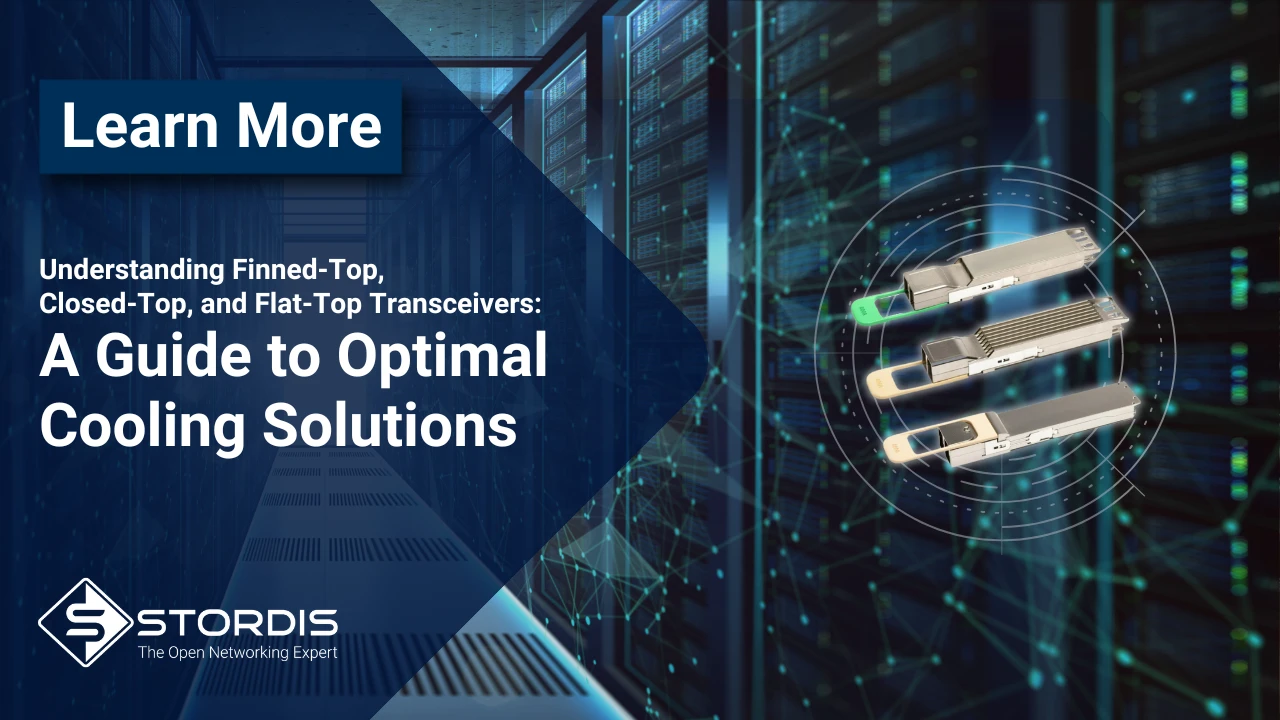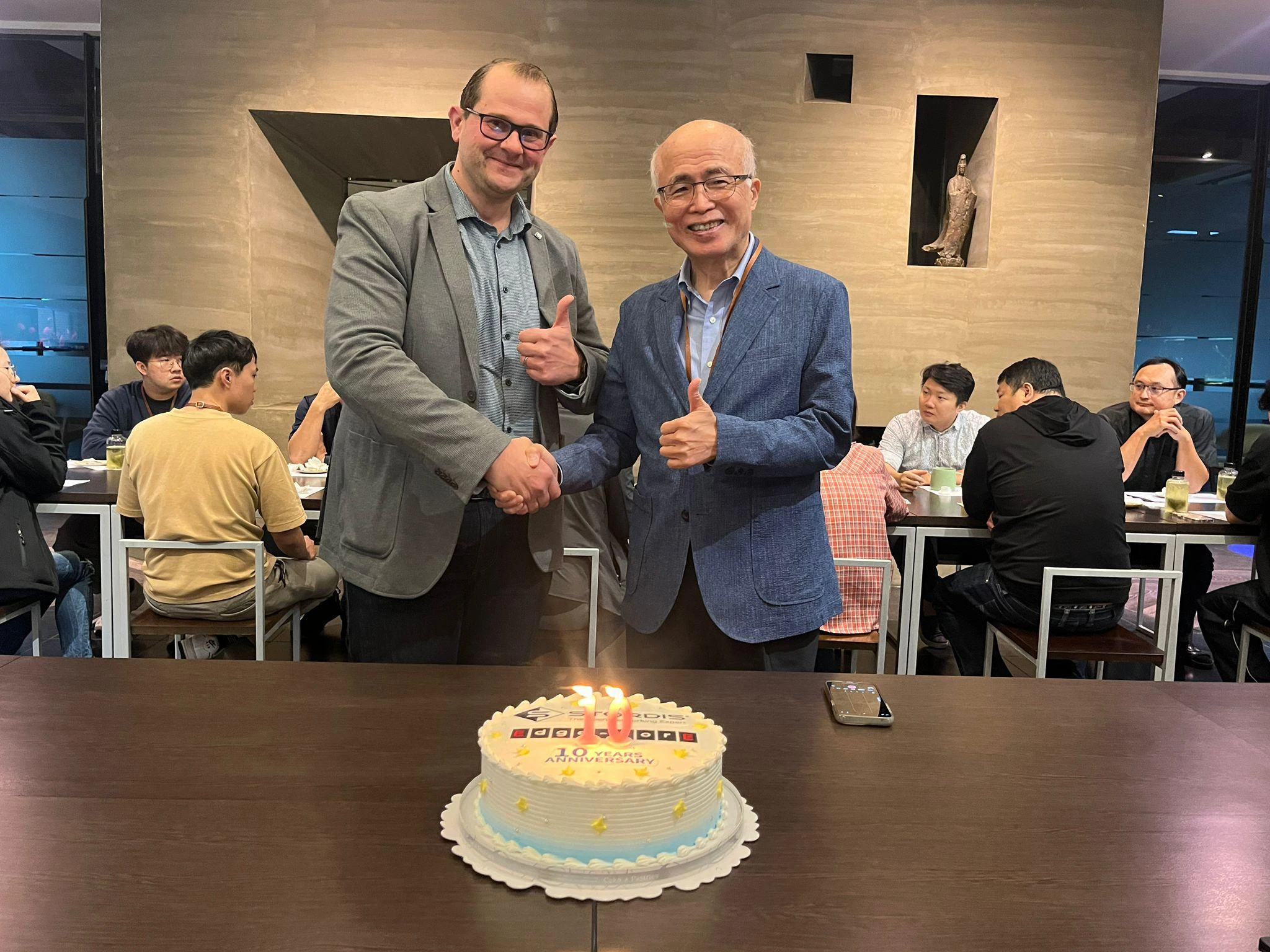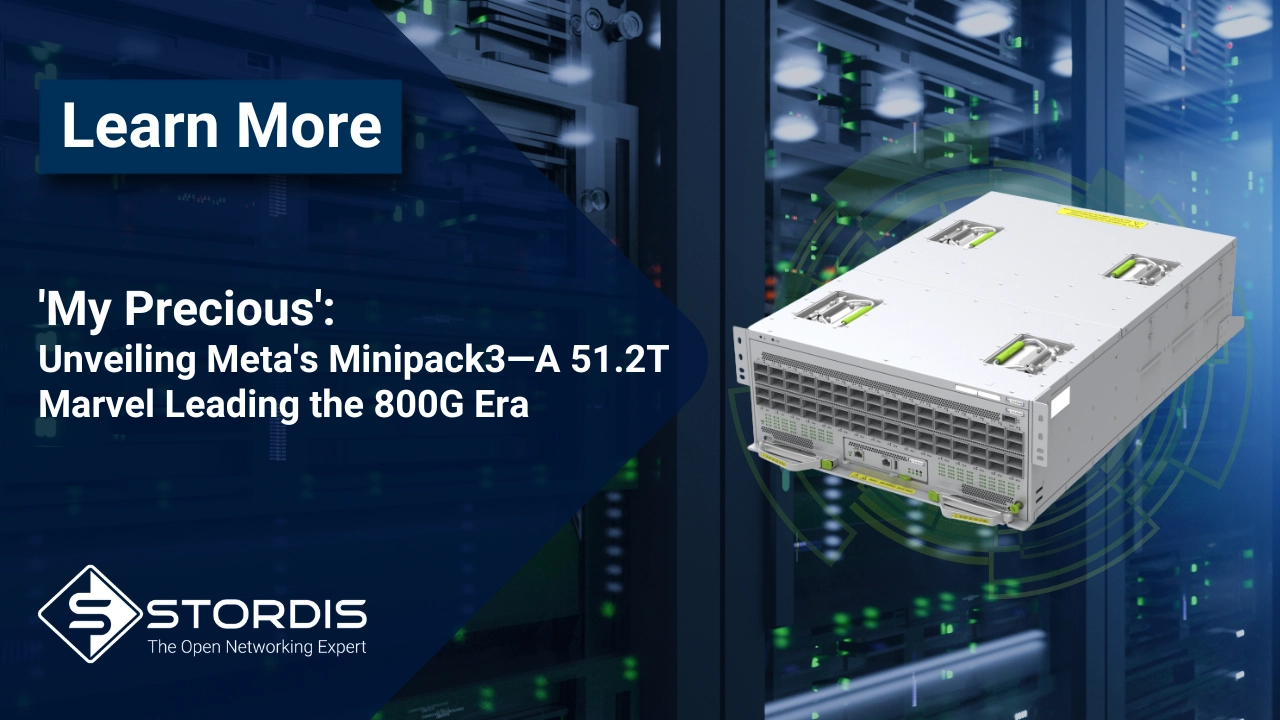- You have no items in your shopping cart
- Continue Shopping
Understanding the Difference: Spine-Leaf vs. Traditional Data Center Architectures
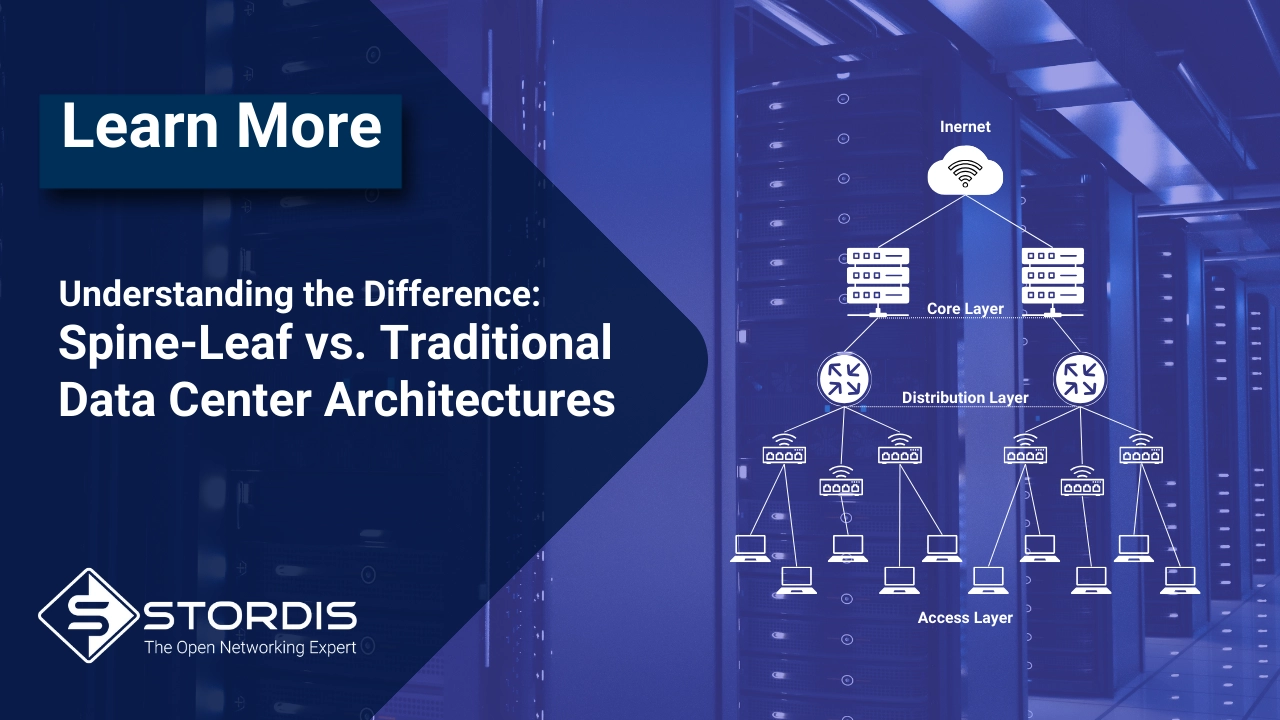
In today’s data-driven world, data centers are the backbone of modern IT infrastructure. With the increasing demand for cloud computing, big data, and AI, data centers need to scale efficiently and provide high-speed connectivity. Two key architectures used in data centers are Spine-Leaf and Traditional Three-Tier DC designs. Understanding the differences between them is crucial for businesses and IT professionals seeking the most suitable solution for their needs.
What is a Traditional Three-Tier Data Center?
The Traditional Three-Tier Data Center architecture has been the standard for decades. It typically consists of three layers:
1. Core Layer: The backbone of the network, designed to handle large volumes of traffic and forward it quickly to its destination.
2. Aggregation (Distribution) Layer: Consolidates traffic from multiple access switches before forwarding it to the core.
3. Access Layer: The layer closest to the devices, where servers and endpoints connect to the network.
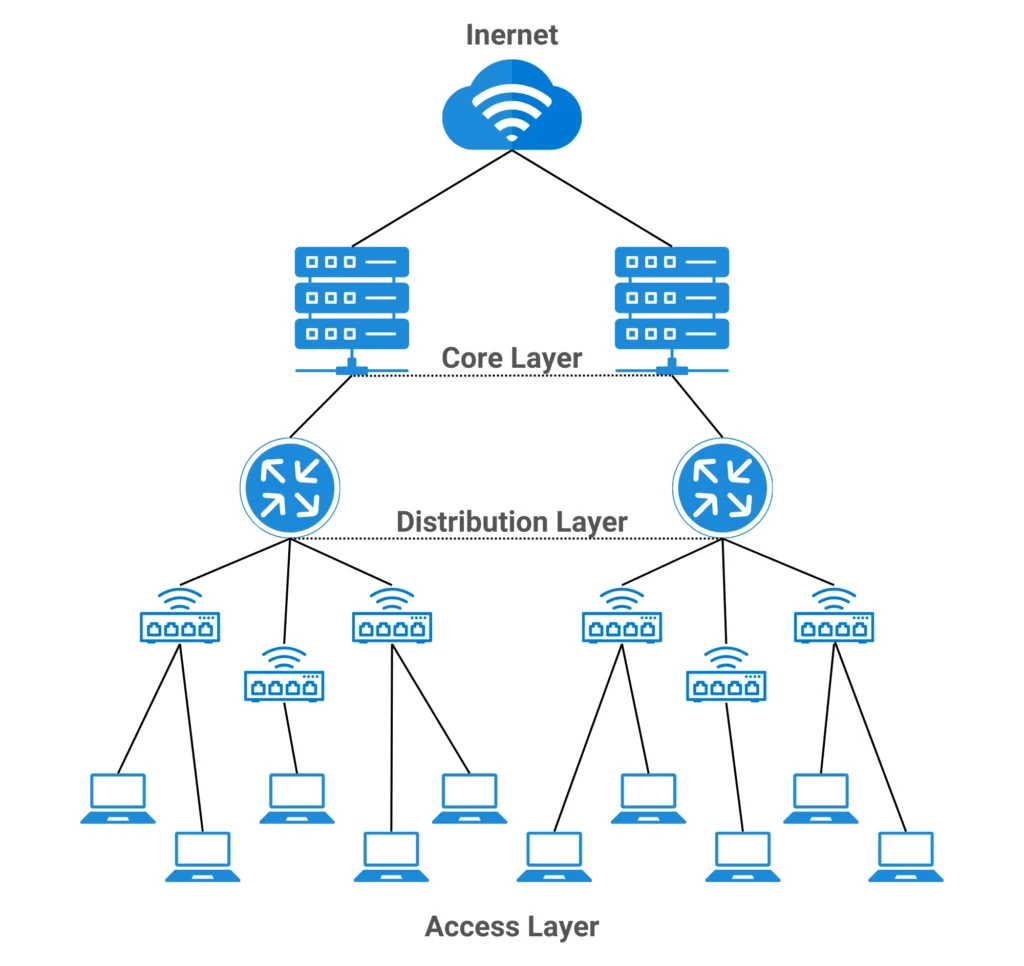
In this architecture, data flows from one layer to the next, which works well with lower levels of horizontal (server-to-server) traffic. However, when servers communicate intensively, such as in high-demand cloud environments, this structure can cause congestion and delays due to the hierarchical flow.
Example: In a traditional setup, data must pass through several layers and switches to reach the destination server, which can increase latency and create potential bottlenecks, especially as server-to-server communication demands grow.
Advantages of Traditional DCs:
• Familiar and widely adopted.
• Scalable to a certain extent, but less efficient at handling large volumes of east-west traffic.
Disadvantages of Traditional DCs:
• Scalability: Traditional designs are prone to bottlenecks as they grow, limiting scalability.
• Latency: Data travels through multiple layers, increasing latency and reducing the efficiency of east-west traffic.
• Complexity: With more layers, managing traffic becomes more complicated, requiring careful planning and design.
What is Spine-Leaf Architecture?
The Spine-Leaf architecture was developed to meet the needs of modern data centers, providing better scalability, lower latency, and higher performance for growing cloud and AI workloads. Unlike the traditional design, the spine-leaf structure consists of two layers:
1. Spine Layer: The spine switches route traffic between leaf switches. Each leaf switch is connected to every spine switch, forming a non-blocking network that enables direct paths for data traffic, significantly reducing latency and enhancing performance.
2. Leaf Layer: The leaf switches connect directly to servers and other endpoints, handling the bulk of east-west traffic.

This architecture eliminates the need for an aggregation layer, ensuring that traffic flows more directly and reducing latency significantly.
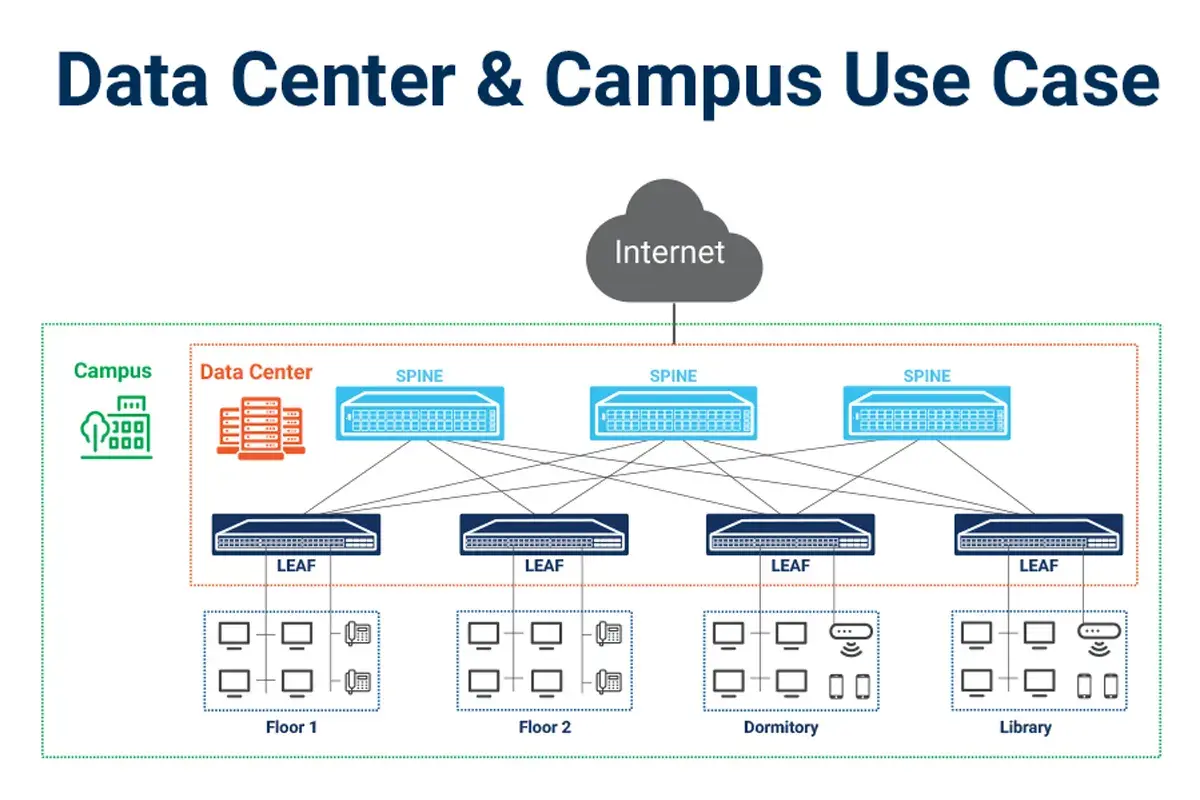
Additional Option for the Curious: Understanding Spine-Leaf with ToR and Super Spine
For those interested in how large-scale data centers push the boundaries of networking, it’s important to understand additional layers like Top of Rack (ToR) and Super Spine switches in a Spine-Leaf architecture. These components are vital in managing the immense traffic demands of modern AI and cloud environments.
A Top of Rack (ToR) switch is placed at the top of each server rack, connecting the servers within that rack to the wider network, specifically to the Leaf switches. This setup reduces cable clutter, simplifies management, and improves communication between servers within a rack.
For even larger networks, a Super Spine layer is added above the Spine switches to interconnect multiple Spine-Leaf networks. The Super Spine serves as a higher-level backbone connecting multiple spine layers, ensuring that data flow remains efficient and uninterrupted across very large data center setups and creates an additional layer of routing to ensure high-capacity data transfers.
Example device: The Edgecore AS9736-64D, featuring 64 ports of 400G capacity, is a robust example of a Super Spine switch, providing the backbone for connecting multiple spine layers in large data centers. You can explore this device on the STORDIS website https://stordis.com/product/edgecore-networks-dcs520-as9736-64d-400g-cloud-data-center-switch/.
Together, ToR, Spine-Leaf, and Super Spine form a high-performance network architecture that can scale efficiently to meet the needs of large cloud providers and AI applications. Solutions like these are available through Edgecore and offered by STORDIS to ensure optimal network performance at any scale.
Understanding CLOS Architecture in Spine-Leaf Networks
The CLOS network is the underlying principle of the Spine-Leaf architecture. Named after Charles Clos, who developed the concept in the 1950s, this design has been adapted for modern data centers to support high-bandwidth and scalable network needs. Here’s how it relates to Spine-Leaf:
Like Spine-Leaf, a CLOS architecture features a multi-stage switch network with interconnected layers. In data centers, the CLOS design forms a multi-layered spine-leaf topology where each layer serves to balance traffic, reduce latency, and prevent bottlenecks.
How does it work?
- Multiple Layers: CLOS architecture uses multiple layers of network switches, typically organized in a Spine-Leaf structure. In a CLOS-based Spine-Leaf network, Leaf switches connect to servers and devices, while Spine switches interconnect these Leaf switches, ensuring multiple pathways for data flow.
- Redundant Paths: Each Leaf switch is connected to every Spine switch, creating multiple pathways for data to travel. This ensures that if one path is congested or fails, data can still reach its destination through another path. This redundancy improves network resilience.
- Horizontal Scalability: If you need more capacity, you can easily add more switches at the Leaf and Spine layers. This makes CLOS architecture highly scalable, allowing the network to grow in size without losing efficiency.
Advantages of Spine-Leaf Architecture:
• Scalability: Spine-leaf designs can scale horizontally by adding more switches to both the spine and leaf layers. The Edgecore AS9716-32D, a 32-port 400G switch, offers scalability for modern data centers. Learn more at STORDIS website. https://stordis.com/product/edgecore-networks-dcs510-as9716-32d-400g-cloud-data-center-switch/
• Low Latency: Traffic flows through fewer hops, reducing latency. The Edgecore AS7326-56X is a strong choice for leaf switches, optimizing east-west traffic handling. Details on STORDIS website. https://stordis.com/product/edgecore-networks-dcs203-as7326-56x-25g-cloud-data-center-switch/
• Resilience: With its fully meshed topology, spine-leaf architecture offers built-in redundancy, enhancing reliability. Switch2Open optics, tested for compatibility, ensure smooth connectivity. https://stordis.com/product-category/transceivers-and-cables/?yith_wcan=1&filter_brand=switch2open&query_type_brand=or
• Performance: The spine-leaf design ensures consistent performance across large networks, making it ideal for cloud and AI applications.
Comparing Spine-Leaf and Traditional DCs
| Feature | Traditional DCs | Spine-Leaf Architecture |
| Scalability | Limited, less efficient at scale | High, designed for large-scale setups |
| Latency | Higher, due to multiple layers | Lower, fewer hops for east-west traffic |
| Traffic Handling | Best for north-south traffic (user to server) | Optimized for east-west traffic |
| Resilience | Redundant paths but may require manual intervention | Built-in redundancy and failover |
| Cost | Lower initial costs | Higher upfront investment, but more cost-effective at scale |
| Complexity | Simple but rigid | Flexible, but requires careful design |
Choosing the Right Solution for Your Data Center
When deciding between traditional three-tier and spine-leaf architectures, it’s essential to consider the specific needs of your organization. For smaller environments, a traditional design might be sufficient, but for larger data-driven businesses, Spine-Leaf offers unmatched scalability and performance.
Did You Know? Meta’s Large-Scale Data Center
Some of the largest tech companies, like Meta (Facebook), utilize massive Spine-Leaf architectures that take scalability to the next level. Meta’s network infrastructure supports millions of users daily, showcasing complex, multi-layered topologies that demonstrate how vast and scalable these networks can become. Meta’s approach highlights Spine-Leaf’s power to handle immense data demands globally.
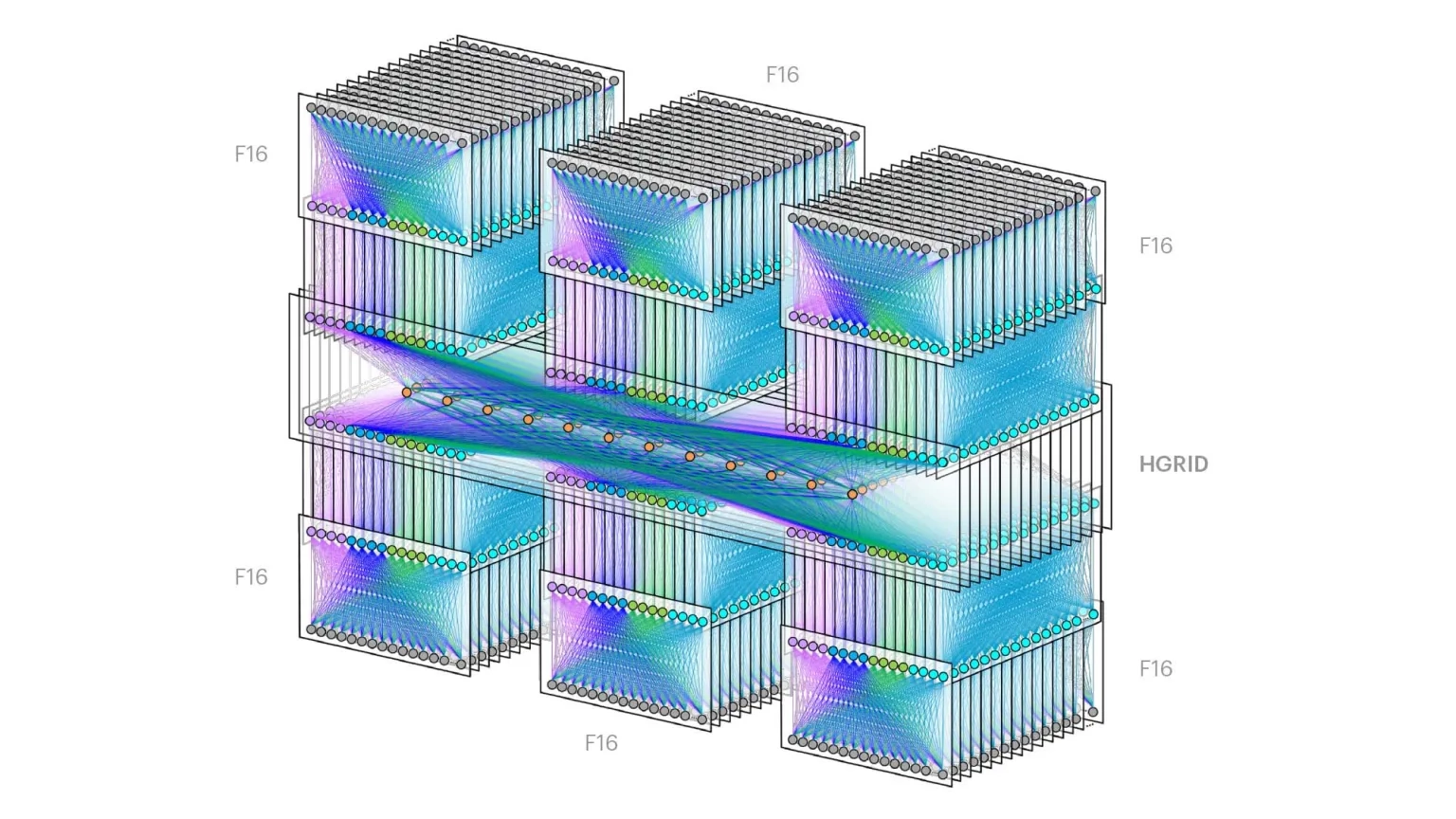
Meta’s F16 fabric design, connecting multiple data center buildings with HGRID for seamless scalability and redundancy. Source: Meta Engineering
Conclusion
As data centers evolve to meet the increasing demands of cloud computing, AI, and big data, Spine-Leaf architecture is emerging as the preferred choice. Its scalability, resilience, and ability to handle large volumes of east-west traffic make it ideal for modern data centers. While the initial cost may be higher, the long-term benefits—particularly in terms of performance and flexibility—make it a smart investment for growing businesses.
While traditional DC architectures are sufficient for smaller, predictable environments, Spine-Leaf is ideal for data-driven businesses that require higher scalability and performance.
To future-proof your data center with these advanced technologies, explore STORDIS’ offerings to see how you can implement the most efficient solutions today.

Sebastian Stokłosa, Head of Product Management at STORDIS, boasts over 12 years of experience in product and lifecycle management, with a significant focus on the teleinformatics industry. Leading the product management team, he’s dedicated to crafting market-leading solutions tailored to customer needs. His deep understanding of teleinformatics trends has been pivotal in steering STORDIS’s product strategies to align with evolving market demands. An adept leader, Sebastian ensures his team’s innovations consistently deliver value and exceed customer expectations, solidifying STORDIS’s position in the technology sector.
Comments
You might be interested in
